What To Do With Basil In Winter: End Of Season Care Guide
Garden-grown basil in winter usually dies all the way back. Learn how to care for and preserve basil at the end of the season so you can enjoy it through the winter.
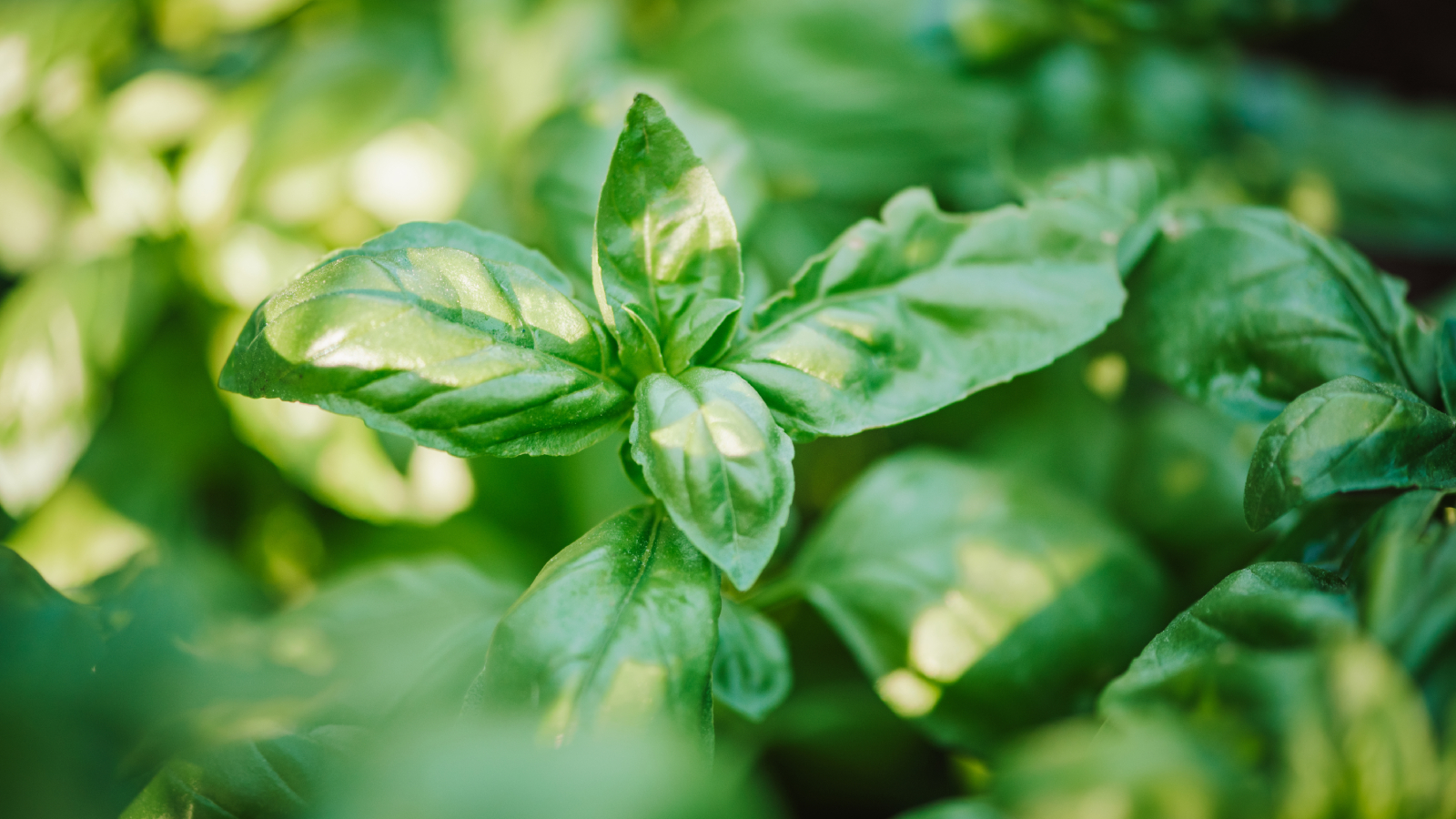
Most herbs thrive in sunny Mediterranean-like conditions in well-draining soil. Certainly one of the more popular flavorful herbs is basil. Is sweet basil a perennial? It is definitely not, however, there are a few varieties that grow in their native range as short-lived perennials.
Certain varieties of basil are hardier and tend more toward a perennial life cycle, but the culinary basils we grow in our gardens and purchase at the grocery store are tender annuals. As soon as temperatures drop, the leaves do too, and the roots die.
While cooler temperatures signal the end of the growing season for garden basil plants, basil is a remarkably stoic plant and can be propagated and maintained indoors during the cold months.
Does Basil Come Back Every Year?
Will basil grow back after winter causes it to die back? The answer is no, but you can save the basil plant in several ways and the herb can be preserved for use throughout the year.
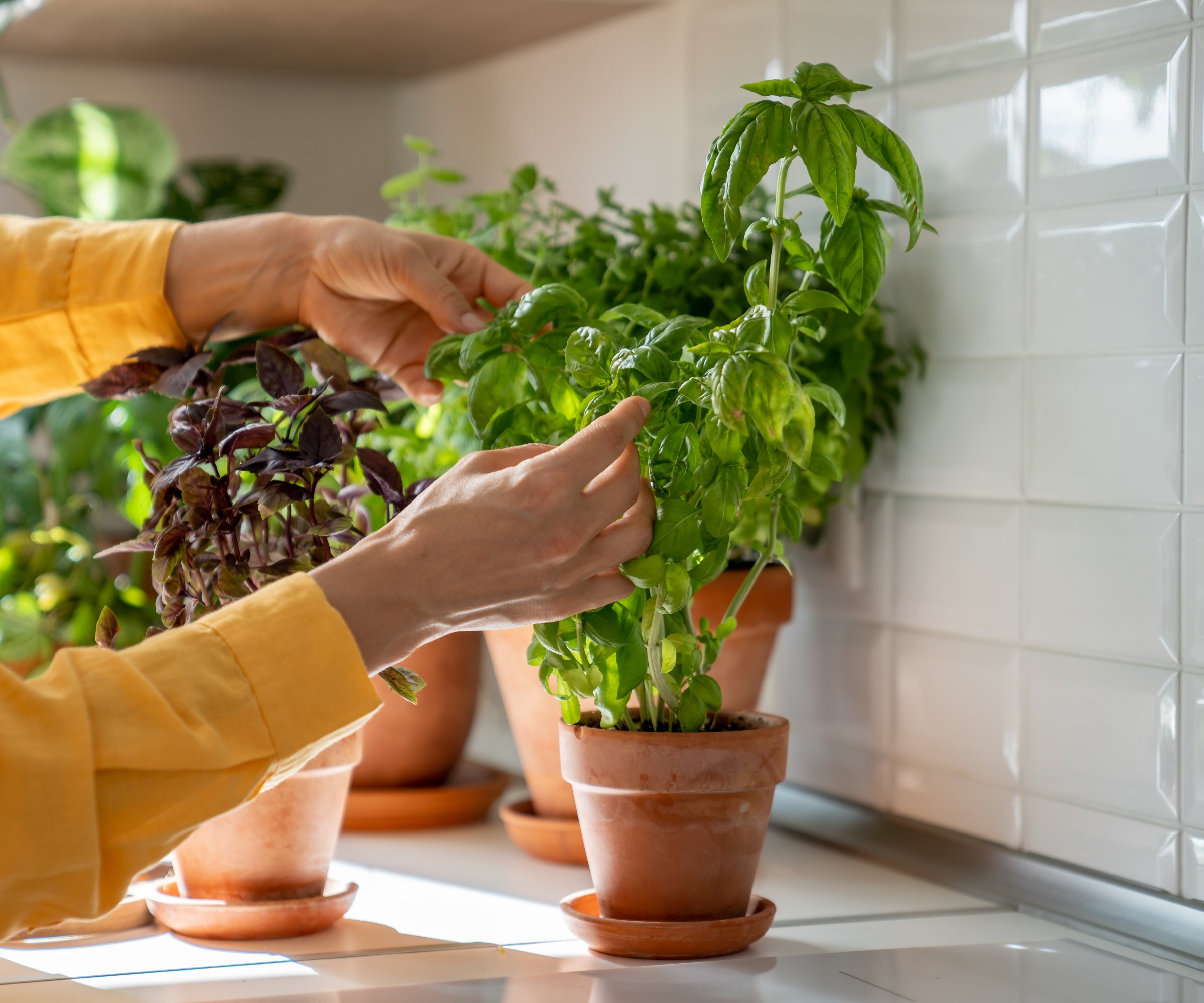
How to Harvest Basil Before Winter
Pinch off or use scissors to remove leaves throughout the growing season. Pinching during the season will promote a lusher, fuller plant with more leaves. Flowers that bloom during the hotter days should be nipped off to promote leaf development. Provide the plants with an inch (2.5 cm) of water weekly.
Basil grown in containers will need more frequent watering to prevent it from drying out. The good news about container plants is that they are easy to move indoors at the first sign of cold weather.
Preparing Basil for Winter
By the time your garden basil leaves have begun to turn brown and fall off they should be entirely harvested. Basil leaves may be preserved in several ways for winter storage. These can be dried for later use, but some aroma and flavor will be sacrificed.
Gardening tips, videos, info and more delivered right to your inbox!
Sign up for the Gardening Know How newsletter today and receive a free copy of our e-book "How to Grow Delicious Tomatoes".
Cut off the stems and wash the leaves. Bundle the leaves with twine and hang them upside down in a warm, dry area to dry.
If you want to keep the plant itself for a bit longer, dig it up and pot it in good houseplant soil. The plant will live for a while, but as the daylight hours dwindle, the leaf production will slow. Eventually the plant will die, but transplanting it can give it several more months.
Leaf cuttings can be rooted in water as well. These will produce a new plant that can extend the usefulness of the fresh leaves. Basil grows well in water, in fact you can grow this delicious herb hydroponically all winter.
Our experts recommend the Basil Hydroponic Mason Jar Garden Kit from Coco & Seed to get started growing hydroponically. It comes with everything you need to grow basil during the cold winter months—hello, yummy pasta! And the best part is there's no dirt required, which means no muddy mess inside.
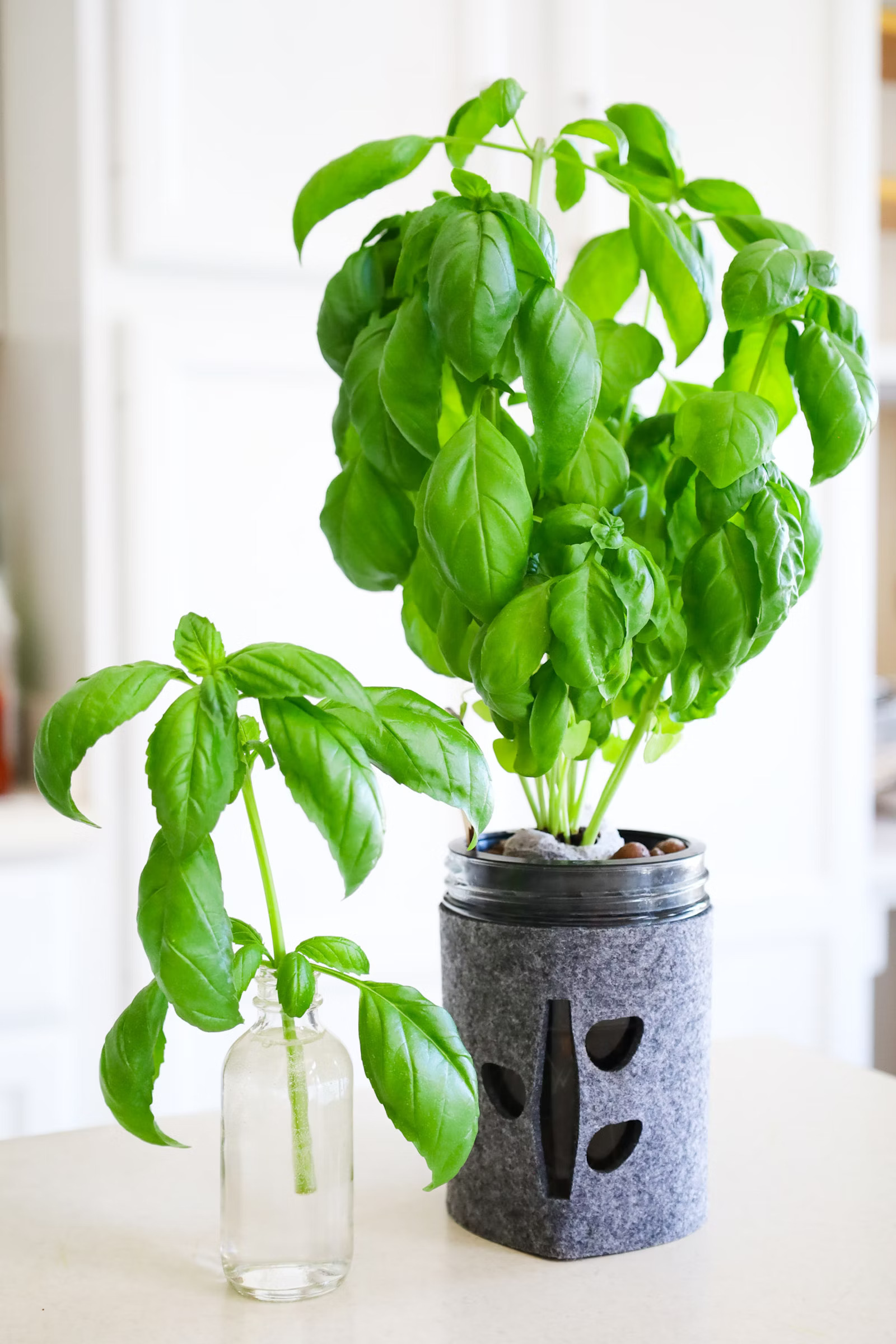
Get the taste of garden-fresh basil year-round with this simple hydroponic kit! This space-saving solution is perfect for beginner gardeners, apartment dwellers, or home chefs who want fresh herbs at their fingertips.
What To Do With Basil in Winter
A container plant brought in for winter or a newly potted up basil plant will need to do some adjusting to interior conditions. Keep the container away from drafty windows, doors and heating vents.
A southern or western facing window will give the plant plenty of light. Basil will become leggy if it doesn’t have enough light and its leaf production will slow. A minimum of 6 hours of natural light will keep the plant happy. However, under artificial lights, in order to produce leaves, the plant will need 10 to 12 hours a day during the darker winter months.
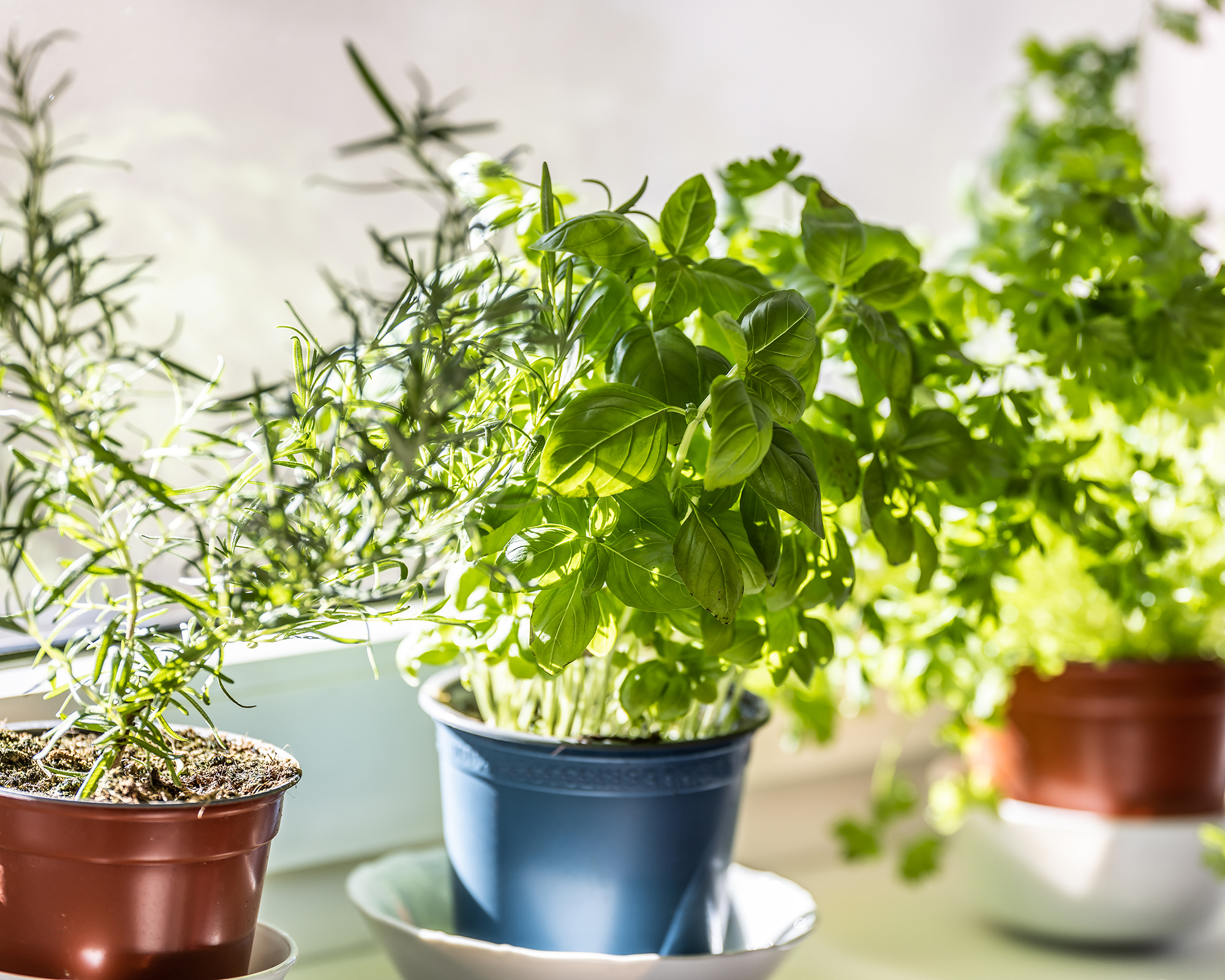
Unless you are growing the herb in a greenhouse, the hot temperatures and direct sunlight that basil thrives in are not often found in the average person’s home, so be sure to provide as much light as possible.
Even so, the plant may linger for a time, but it will succumb at some point. With this knowledge, it is best to be prepared to either purchase another plant or start your own from seed in the spring.
Culinary basil is hardy to USDA zones 10-11, but even in warm regions like these, its life is short. Any temperature below 45 degrees Fahrenheit (7.22 C) will kill the plant. The only way to save basil in winter in the cooler regions, is to containerize it and bring it into the warm interior.
In very warm locations, the plant may survive winter, but even then it will begin to slow its growth and eventually die. Feed the basil plant with organic houseplant food diluted by half.
Luckily, basil is a very easy herb to propagate from seed, and cuttings will start even more quickly.
Can Basil Survive Indoors?
Sweet basil is meant to live its life cycle within one year and thereafter go to seed. At the end of the season, though, you can try to keep it alive by moving potted basil indoors.
Bringing your garden basil plant indoors will help it live for several more months. Be sure to prune it regularly so it can produce more flavorful leaves. If the plant gets leggy, provide it with supplemental light and pinch it back so the new shoots will be more compact and bushy.
Ensure the plant’s container has plenty of drainage holes and avoid placing the pot in a saucer that collects water. Water your basil plant when the second knuckle inserted into the soil indicates dryness. In most homes with central heating, plants need to be watered weekly.
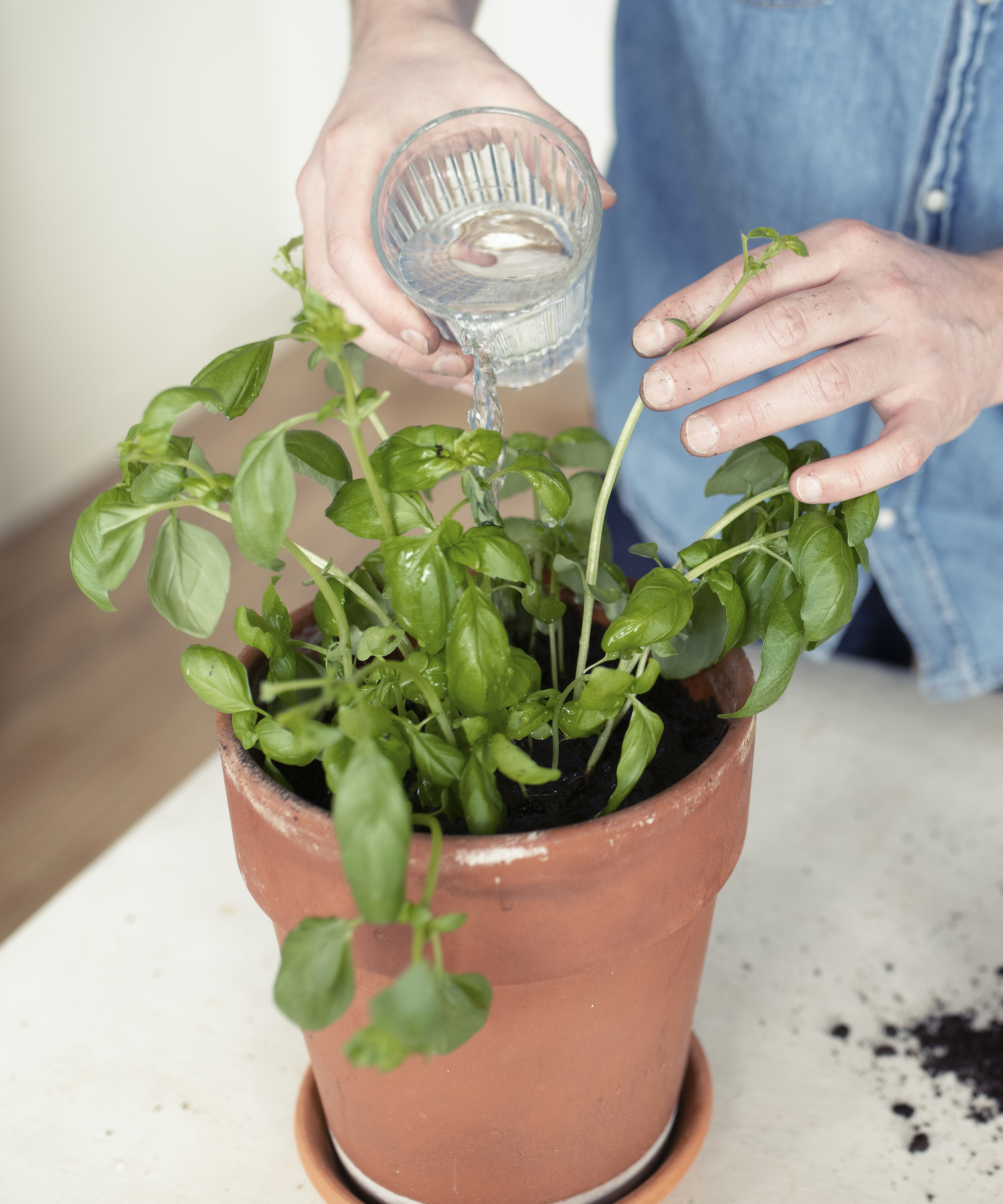
Preserving Basil for Later Use
If you want to use the harvest when it's fresh, pesto is an option and an excellent way to preserve the leaves. Pesto may be canned or frozen for later use.
Basil is best used fresh, but it is also pungent when dried. Using a dehydrator or simply preserving the foliage by air drying in a warm, dry, well-ventilated room for a week or so is a great way to extend the life of this herb.
Once the herb has dried, remove the leaves from the stems and store the leaves either whole or ground in an airtight container away from heat and bright light. Stored in this manner, dried basil will keep for one year.
A better method for storing and utilizing fresh basil leaves is by freezing the herb. Some experts say that you can keep frozen basil from turning dark by first blanching the dry leaves, then plunging them into cold water before freezing.
While we don’t guarantee it will stay green, freezing your basil results in a flavor more akin to fresh. You can freeze entire leaves in small batches in small plastic bags or chop them and place them in an ice cube tray with a bit of water. Or, mix the chopped basil with a bit of olive oil and then freeze in ice cube trays.
Once frozen, remove the cubes of basil and store in airtight containers in the freezer for future use. You can also make some fabulous pesto sauce and freeze it in batches. Frozen basil will last the same as dried, about one year.

Amy Grant has been gardening for 30 years and writing for 15. A professional chef and caterer, Amy's area of expertise is culinary gardening.
-
 Looking For Plants To Give You The Soft And Fuzzies? Try These 5 Fuzzy Leaf Plant Options
Looking For Plants To Give You The Soft And Fuzzies? Try These 5 Fuzzy Leaf Plant OptionsLovers of texture, drama, silver foliage and tactile plants will adore these special sensory garden additions. These fuzzy leaf plant options will leave you all aglow
By Susan Albert
-
 Get Ready For A Summer Of Hummers! Grow These Full Sun Hummingbird Plants and Flowers
Get Ready For A Summer Of Hummers! Grow These Full Sun Hummingbird Plants and FlowersIf you’re lucky enough to enjoy a sunny backyard, make sure you are maxing out on your pollinator opportunities and grow these full sun hummingbird plants and flowers
By Tonya Barnett
